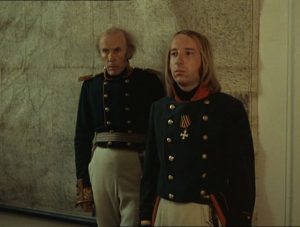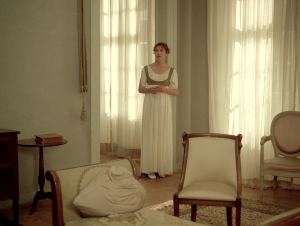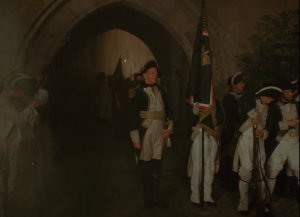Was super disappointed that I missed this along with Perceval as a double feature at cinematheque last year (Rohmer’s Period Films Season), in what was honestly a once-in-a-lifetime opportunity to watch them back-to-back, on the giant ACMI screen, in glorious 35mm. It is the biggest regret of my cinema-going life. I was on the train on the way there and just as I arrived at Flinders St, I had bad stomach pain and went home. I should have stuck it out. Watching this on on DVD was clearly not going to be as extraordinary, but it was nonetheless a true cinematic spectacle.
Almendros shoots this with little camera movement; each frame, long in length and controlled in purpose, giving the film a sense of realism as we watch the kinetic motions of the actors. It’s pure cinema. I’m not that familiar with paintings of the Romantic era, but I know that each frame could substitute as a work.
A majority of the scenes (indoor and out) are warmly lit. The film is minimalist in style which suits Almendros’ sensibility of simple lighting setups. Large indoor spaces often rely on sunlight, while outside characters are typically backlit. Practical lights are used, most notably in one early scene at night with a large ensemble moving (I think due to Russian soldiers?) under some sort of large outdoor archway.
Despite this film being noticeably different to other Rohmer/Almendros collaborations (in terms of pacing, framing and style), it’s hard to comment on how/if/why The Marquise Of O represents a shift for the two compared to Rohmer’s Moral Tale films (as I have only seen Claire’s Knee). I need to watch more, perhaps this wasn’t the best film to start with!



